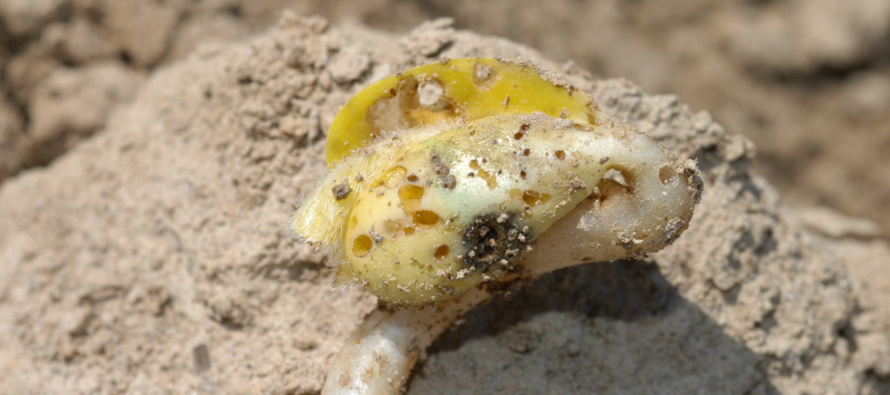Insecticide Seed Treatments in MS Soybeans: Do They Pay?

Related Articles
- 2010 Soybean And Corn Variety Trial Data 3
- Mississippi Cotton Insect Situation of 2010: A Look Back 3
- Rice Insecticidal Seed Treatment Recommendations for Mississippi in 2011 0
Latest Tweets
We have over 15 years of experience testing insecticide seed treatments in soybeans in Mississippi and have developed an extensive data set over the years of potential benefits to soybean farmers. I am a firm believer that the choice to use or not use an insecticide seed treatment should remain exactly that, a choice that the grower makes depending on his production system and whether the economic benefits are aligned with his production goals. Insecticide seed treatments in soybeans have undergone a lot of scrutiny over the years. One of the main reasons is that some regions of the country do not realize the same benefits that the southern states have documented. There are a variety of reasons for this, including pest pressure, planting dates, and surface residue from reduced tillage or cover crops. Another reason some may question the value is because returns in soybean are generally only a couple bushels on average.
A few years ago former graduate student, John North, conducted a meta analysis across the mid-south region from 2005-2014 including 170 replicated University trials. This large data set showed a two bushel advantage of using an insecticide seed treatment plus fungicide compared to a fungicide alone. This has been our typical response in Mississippi. However, in some situations such as cover crop scenarios that contain legumes we have seen much higher responses.

Additionally, we often get questions about whether or not scouting and treating small beans with foliar insecticides can substitute for an insecticide seed treatment. The short answer is no. The reason is because the advantage typically seen is not due to above ground pests as much as it is below ground pest. This is similar to what has been seen in corn but to a lesser degree. Often the soil insect complex is the driving factor in the two bushel response. Although it is difficult to document in every case, we have seen numerous examples of below ground pest such as wireworm, rootworms, white grubs, and grape colaspis larvae causing stand loss in soybean across the Mid-south region. In less typical cases we sometimes see above ground pests such as pea leaf weevil which are found in legume cover crop systems, or bean leaf beetle cause problems but the primary driver on the bulk of the acres is below ground pests. The figure below shows yield response comparing an insecticide seed treatment compared to an automatic pyrethroid application at either V1 or V3 growth stage across eight locations. In these tests we were not able to achieve the same results using foliar insecticides.

The data presented here represent the typical response seen in the Mid-south region under the environments we plant in but do not include cover crops systems. Seed treatment used in these studies were either imidacloprid or thiamethoxam. The odds are in your favor to add a couple bushels to your bottom line but make your choices based on your production system and what makes sense on your farm.




Let me tell You a sad story ! There are no comments yet, but You can be first one to comment this article.
Write a comment